Display Settings
Right-click on your desktop and choose Display settings. This is the same as Notification Center / Action Center icon > All settings > System > Display.
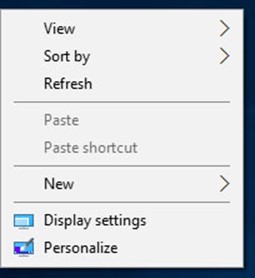
Here you can change scaling, resolution, multiple displays, etc. Again, this screenshot doesn’t appear to match ver. 2004.
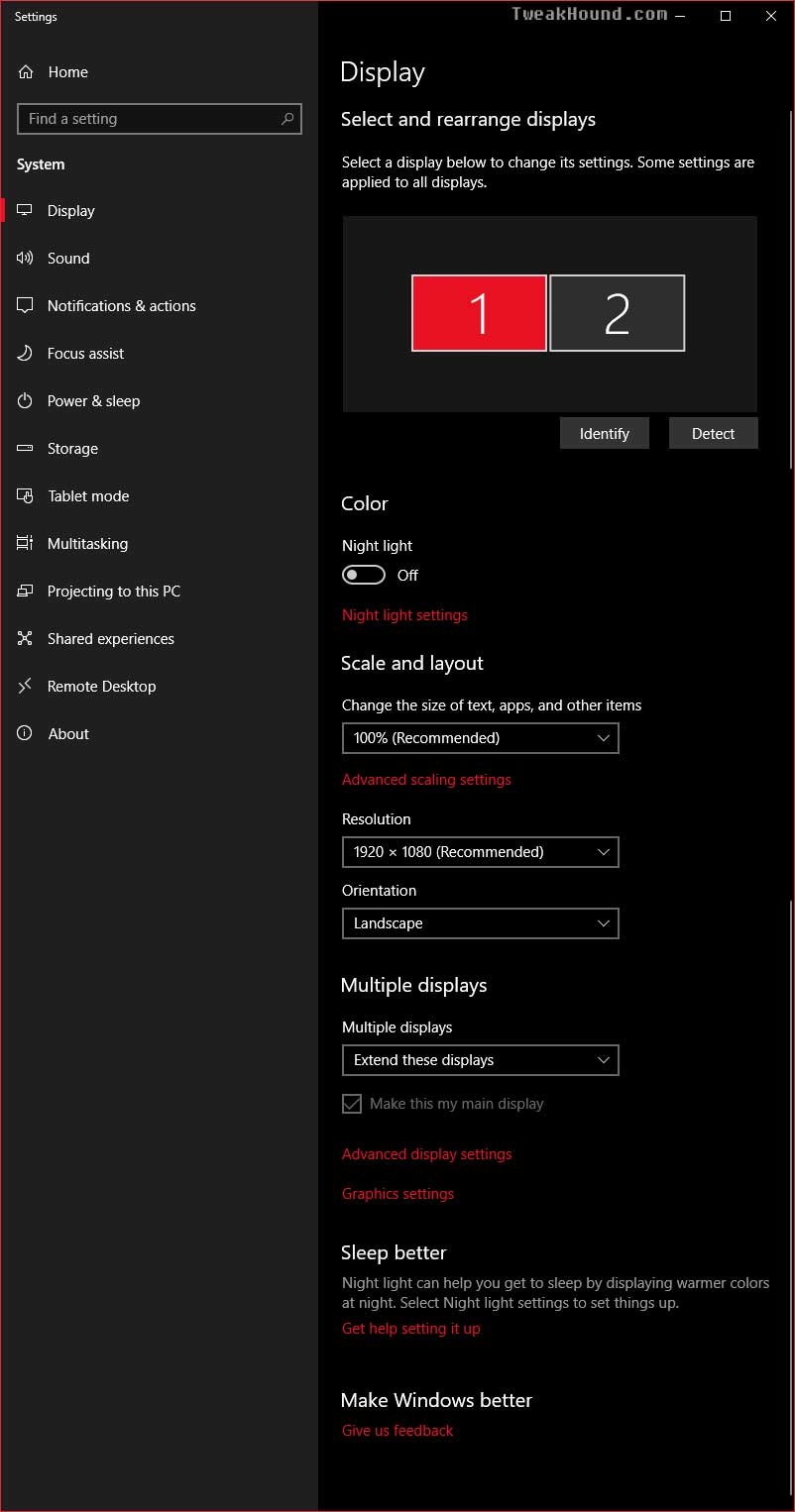
You can click and drag a display to match the physical location of multiple monitors:
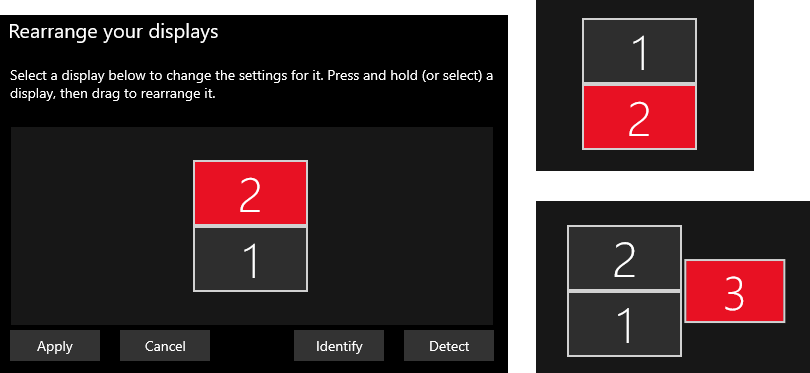
Personalize
Right-click on your desktop and choose Personalize. This is the same as Notification Center / Action Center icon > All settings > Personalization.
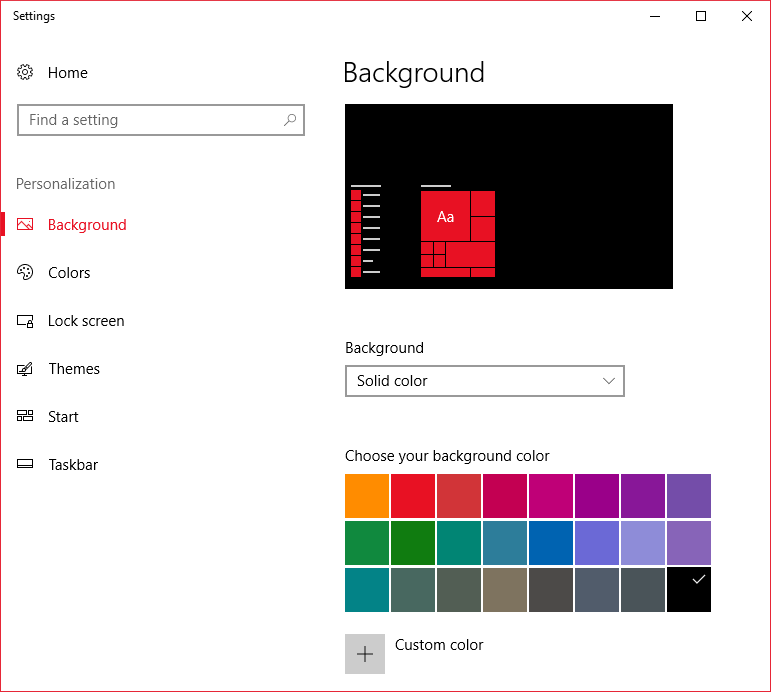
New color options. Here you can set your theme color, set the color for your Start menu, taskbar, Action Center app, and title bars, as well as adjust transparency. (Please stop sending me the registry hack for setting the color of title bars. TH2 added this option here.)
I’m not sure why but there used to be a “Dark” theme, now it’s a color option.
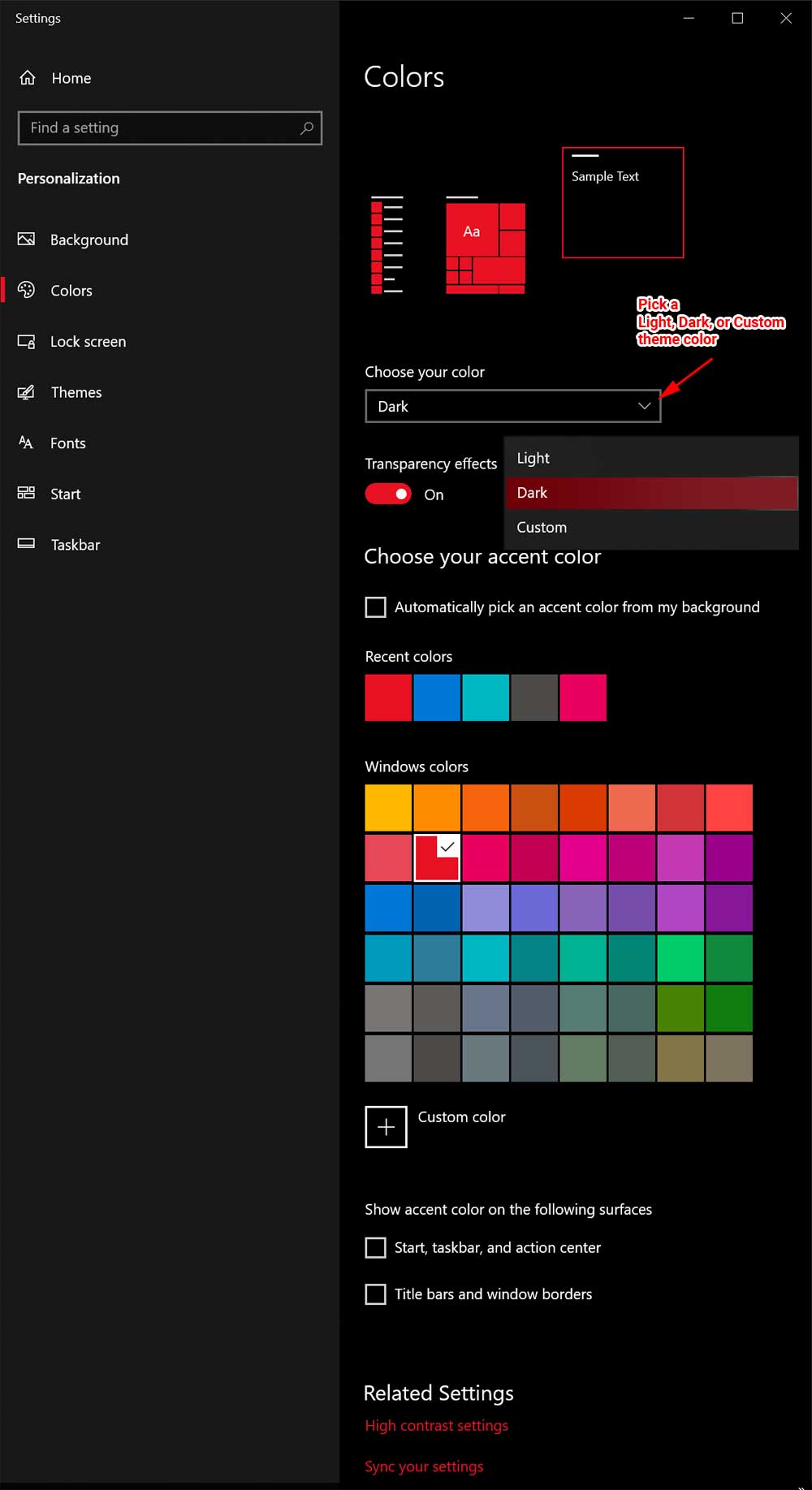
Lock screen settings as well as Screen timeout and screensaver adjustments.
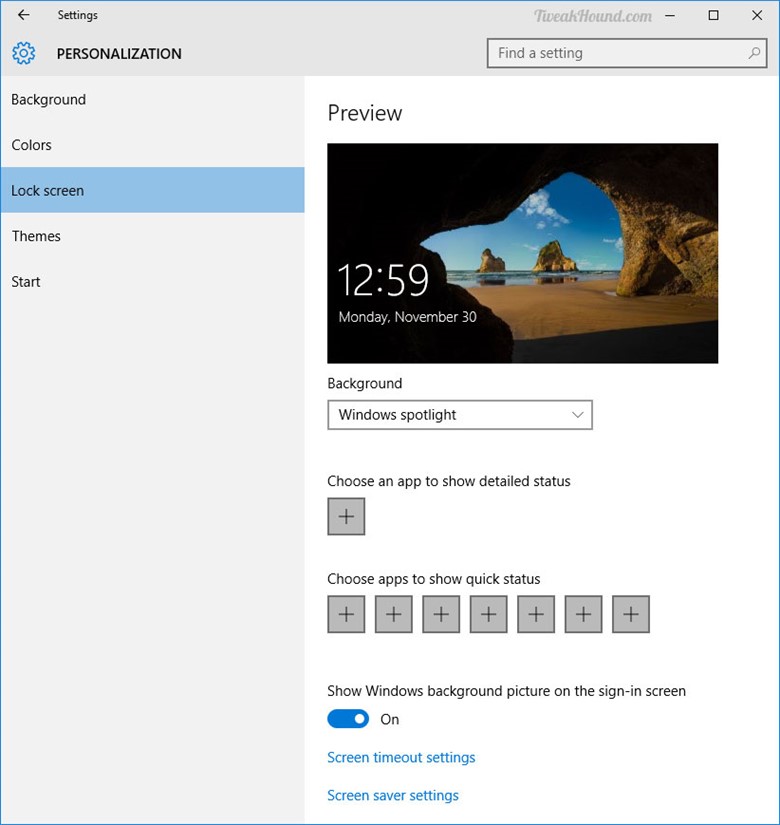
Adjust theme, sound, desktop icons, and mouse pointers
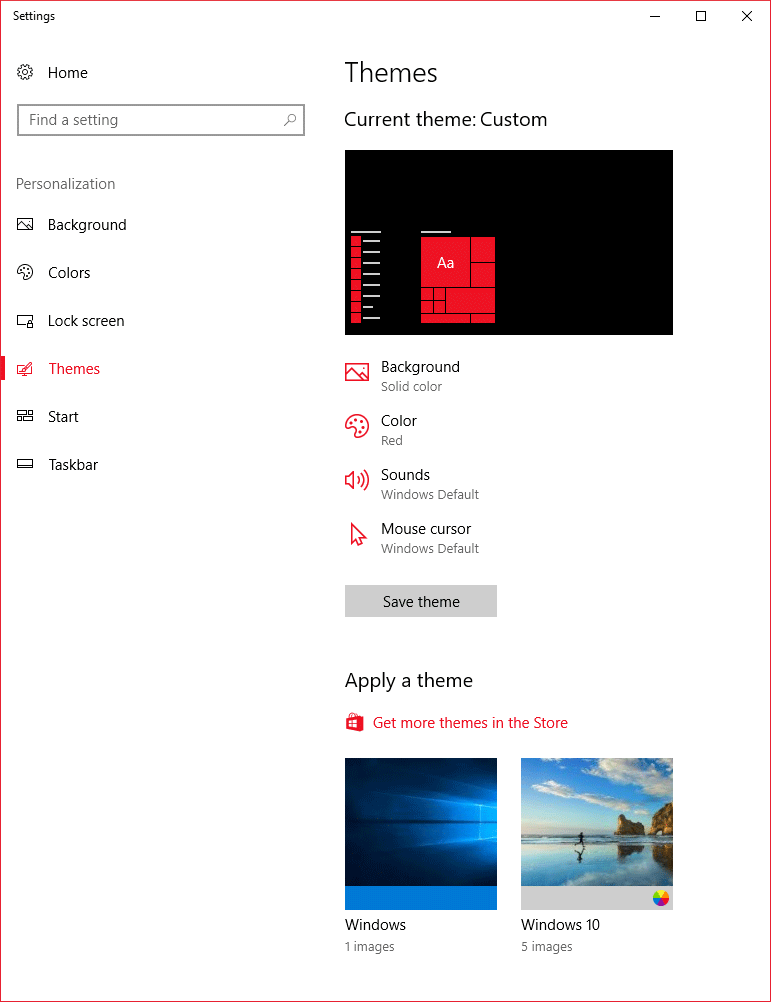
I discuss the Start settings in The Start Menu section of this guide.
The Taskbar
This is the same as right-click on the Taskbar and choose Properties. You can see several options here including a way to move the Taskbar.
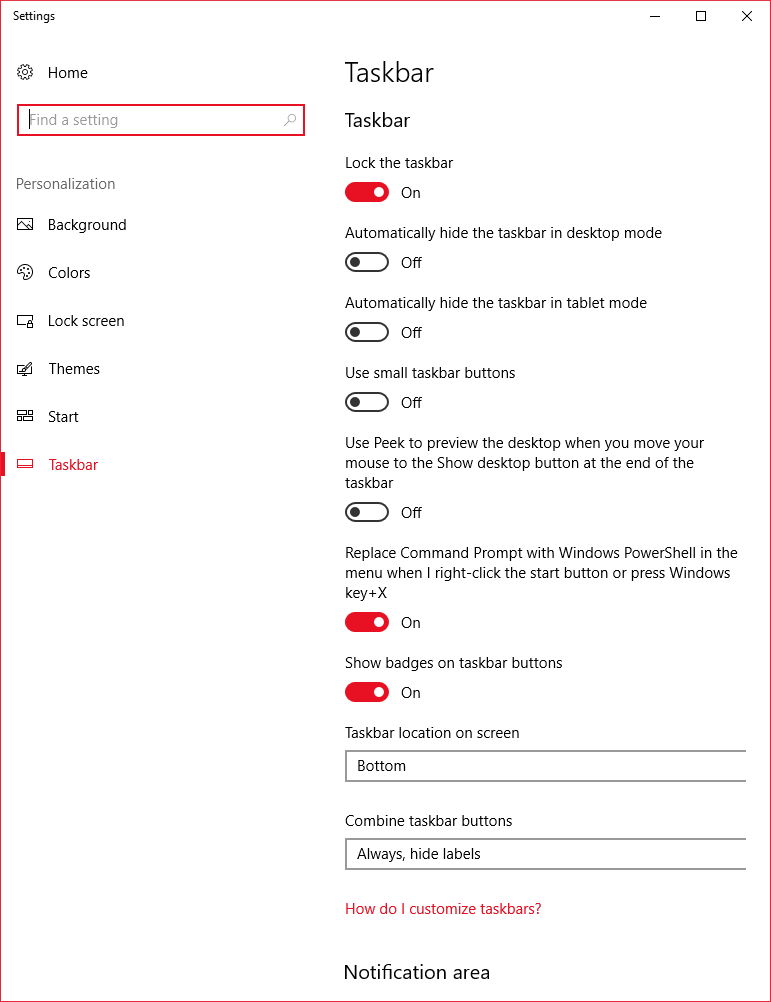
This is the same screen as Notification icon > All settings > System > Notifications.
Here, you can customize notifications and system icons. What you choose is up to you and your annoyance level.
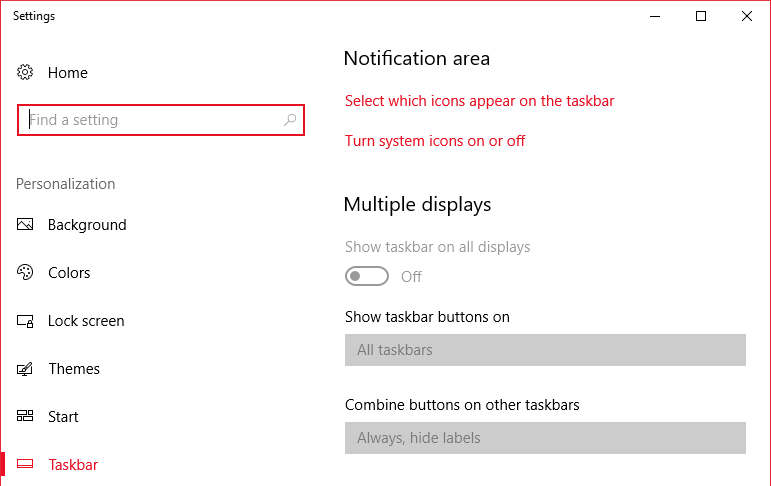
Click Select which icons appear on the taskbar. I like to know everything that is going on with my system so I turn ON Always show all icons in the notification area.
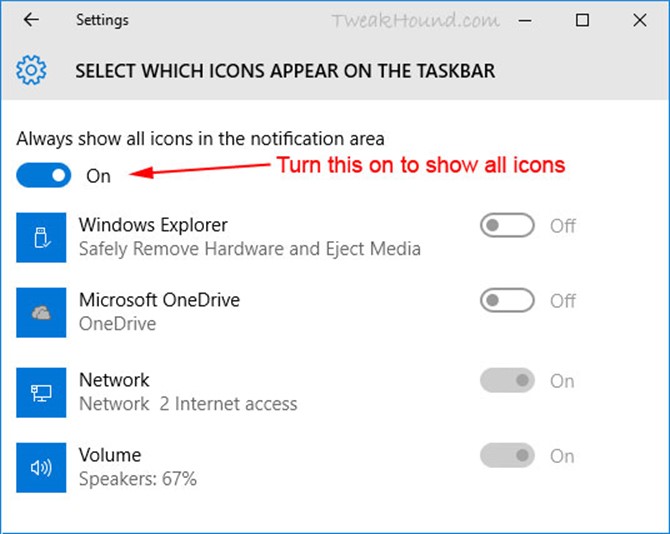
Now go back one step and choose Turn system icons on or off. Available options will differ between a laptop and desktop. Configure it to your preference.
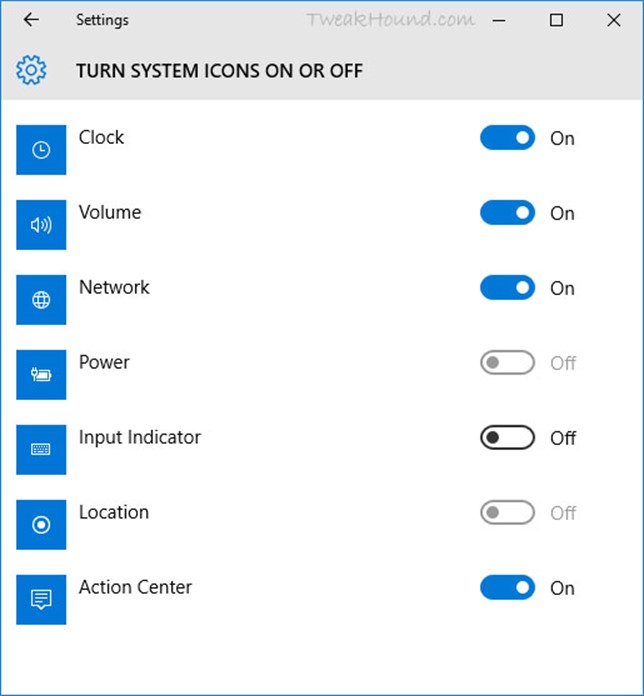
The Search Box
Via right-clicking on the Taskbar you can show it, hide it, or just show an icon.
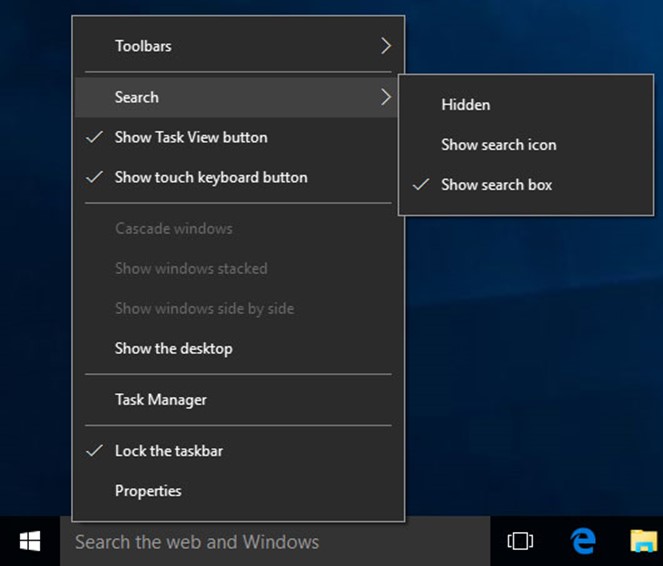
The Task View And Touch Keyboard Buttons
Right-click on the Taskbar. Uncheck Show Task View button and Show touch keyboard button to get rid of them.
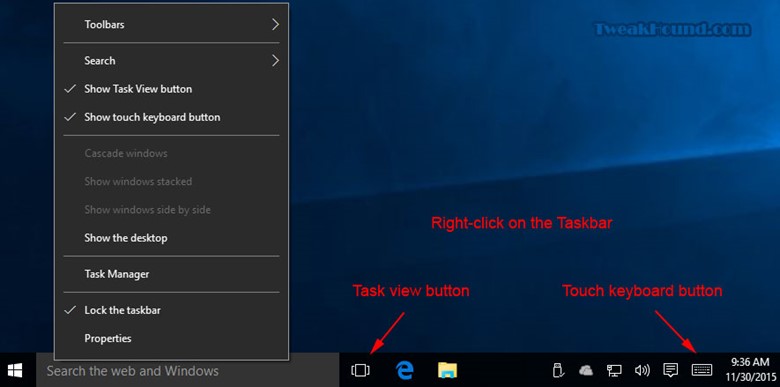
Toolbars
You can create Toolbars on the Windows Taskbar.
Right-click on the Taskbar > choose Toolbars > pick one of the defaults or New toolbar…
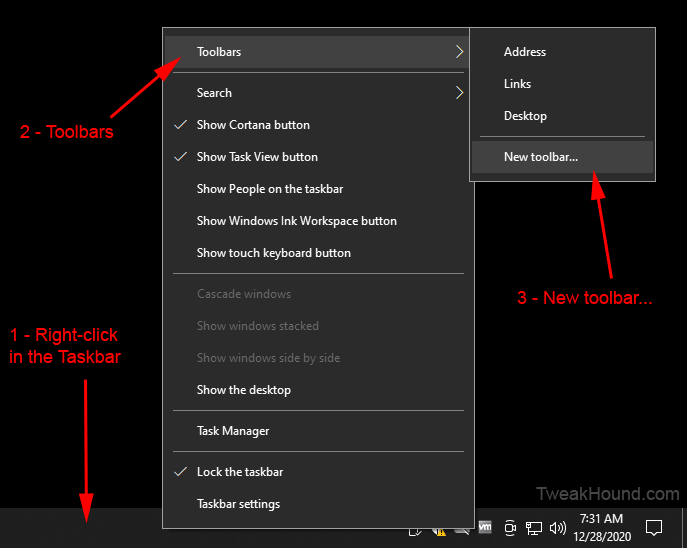
There are 3 default Toolbars: Addresses, Desktop, and Links.
Addresses – You can type a url here. Works just like the Explorer bar.
Desktop – Expands the Desktop Folder as well as many system entries.
Links – Favorite places from Internet Explorer Favorites bar. (AFAIK not Microsoft Edge)
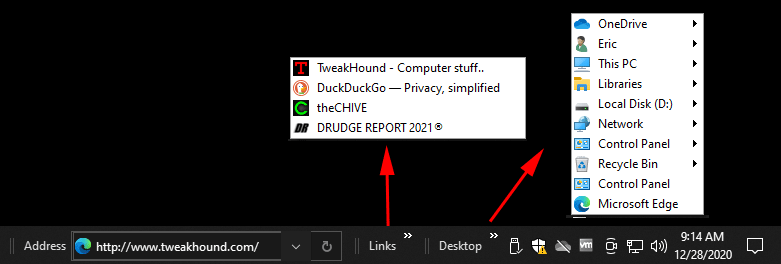
I like to create toolbars to make things more organized and easier to get to. This mostly involves apps and folders that I use frequently. Here are some of mine.
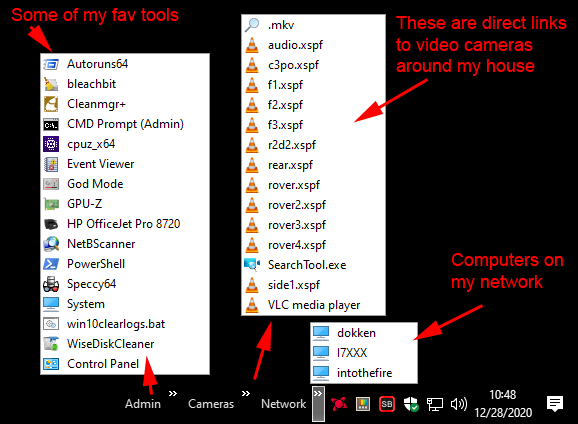
To create my custom Toolbars, I first make a folder in my C: drive called menu_stuff.

In that folder I create a folder for a specific toolbar(s).

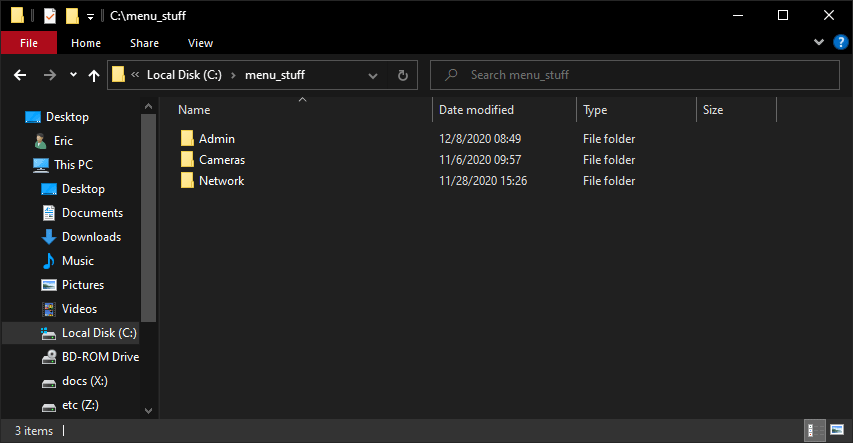
You can fill these folders with shortcuts to apps, or other folders. You then add these by browsing to these folders via the New toolbar… option as mentioned above.
To create links for apps and Control Panel items, right-click (on the app or item) > Send to Desktop (create shortcut).
To create links for administrative tools, drag the icon to the desktop. I then move these shortcuts the folders I just created.
You can add a Toolbar for any folder and it will show the contents of that folder. Here are the contents of my admin menu folder:
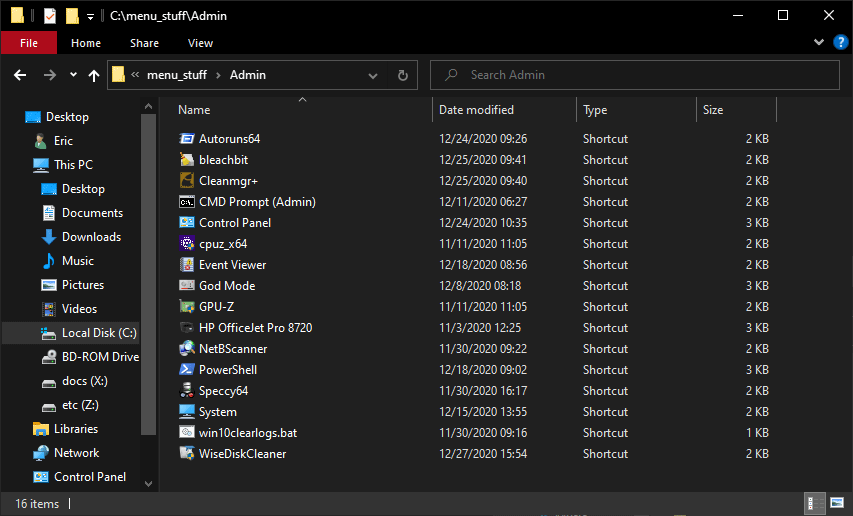
Many of the apps I have exist in the folders above as shortcuts. For instance:
In the Admin folder above there is a shortcut to WiseDiskCleaner. The actual app Wise Disk Cleaner is actually in a folder elsewhere where I keep all my portable apps.
I create a shortcut to it, then move that shortcut to the Admin folder. {Right-click > Send to > Desktop (create shortcut)}
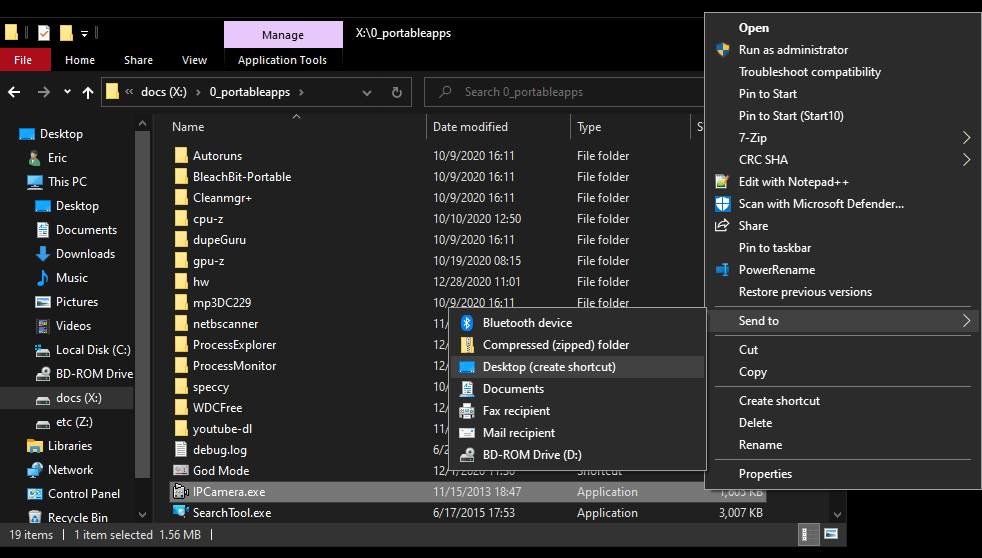
Again, you can create a menu for ANY folder. Let’s say I’ve got some stuff I will be working on for the next month. It is in a folder in the Documents library. Rather than constantly having to navigate there or litter my desktop with shortcuts (grrrrr…), I’ll make a menu item. You just add a toolbar as above and choose that folder:

The Clock
Right-click on the clock > choose Adjust date/time. This is the same as Notification Center / Action Center icon > All settings > Time & language.
Here you can adjust auto time, time zone, and date and time formats. Click Change date and time formats to do so.
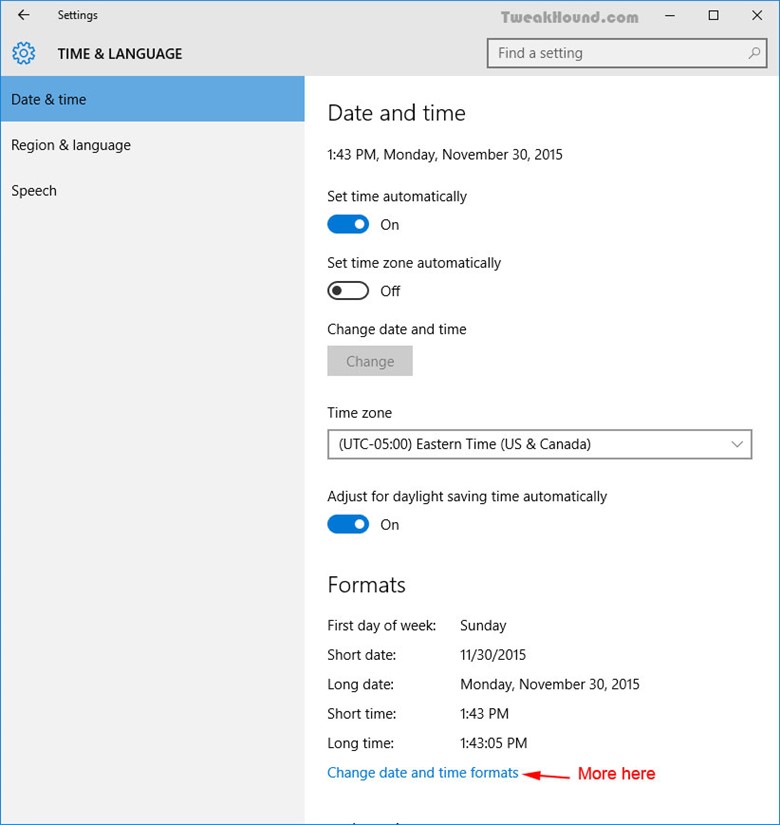
I like a 24-hour clock. To change it set Short time to HH:mm.
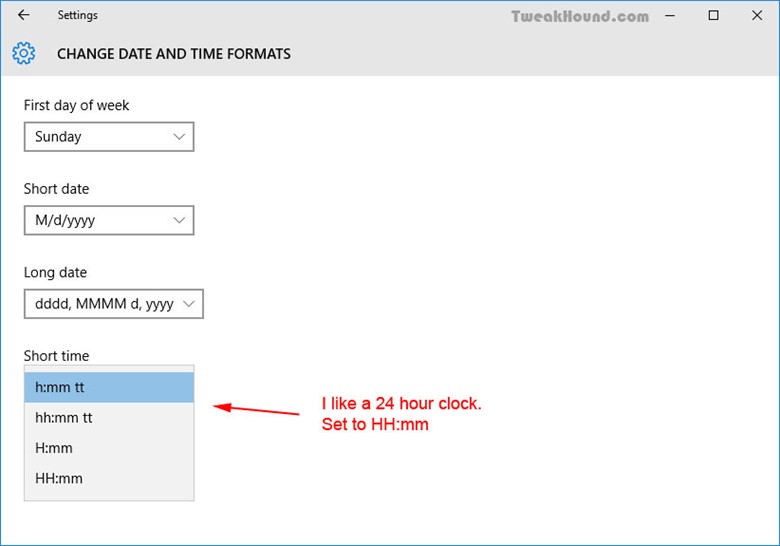
Disable System Sounds
This disables the Sound Scheme. The sound scheme contains things like the sound you hear when you click on something. I’m really not concerned so much with the resources it uses, but I just find the sounds to be annoying. Either way…
Right-click on the Volume icon in your System Tray and choose Sounds > First save your current scheme, click on the Save As… button, enter a name, I used “1”, and click OK > Next, under Sound Scheme: choose No Sounds and click Apply at the bottom right.
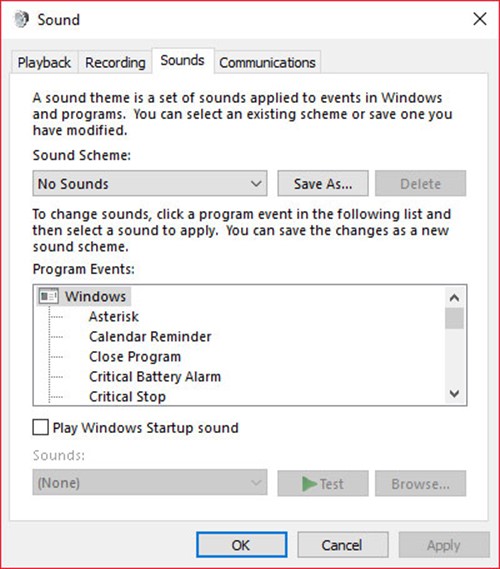
Just a quick question regarding the block Cortana registry tweak. Is this still the current working method? I had read that this has changed a few times over the last few releases of Windows, just confirming it still works.
Thanks for your incredibly thorough guides over the years, it’s always been a great source of education.
Nate
AFAIK. I would advise using O&O Shutup10 to make sure.